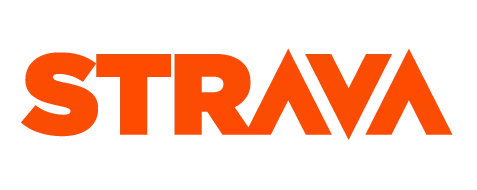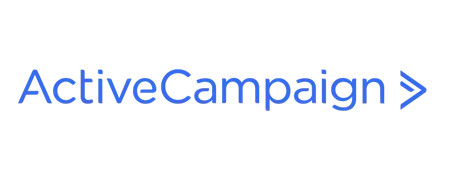Social media metrics require a lot of critical thinking to make sure you are optimizing for your business instead of optimizing for what the social media platforms would prefer.
The social platforms want their users to stay on the platform but for your business, at some point, you need your customers to leave the social platform and take action somehow to purchase your products or services in the real world.
Social media can be a great tool for your business but the goals of the social platform are often at odds to the goals of a business.
Watch the video or read the rest of the post as I try to explain what this means to endurance sport coaches.
Video Version
Text Version
Aiming for Likes and Reactions
Let's use Facebook as an example. When you’re on Facebook, you might have a few metrics that you’re thinking about in terms of your business page.
Page likes and post likes for example.
A lot of people go after these metrics and think that it’d be great to get these as high as possible. It’s sort of true, but also not true. I’ll try to explain why.
You shouldn't think about social media as some magic and unique thing but rather just a channel where you get people to engage with you and your business. It’s more about the behaviour to achieve that metric that makes it important.
A Like is too easy to be of much value
When I am on Facebook I'll scroll the feed and quickly hit like as I go down the page. It actually doesn’t mean that much to me. If I like something, sure, I like it, but 99.9% of the time that doesn’t mean I’m going to take any further action, I may not have even read the post properly or watched the video.
There are some more important things based on the behaviour of your potential customers.
A 3-second video view doesn't mean much
There’s another metric that Facebook surfaces if you do a bit of advertising around video – and this is a really interesting one.
3-second video views. If you put a video up on Facebook and you promote it using Facebook Ads, you’ll get shown the 3-second video views metric.
You might get 300 of those on a video for example. But, again, if you think about the actual behaviour when you’re actually scrolling through the video feed, and a video will automatically start playing. 1-2-3 seconds then move on.
In reality, no one is going to get any real value out of a 3-second video view. Sure, that means the video stopped them to look. But, really, you want to have a lot more than 3-seconds to be able to achieve anything substantial for your business.
In the Endurance sports industry, your customers are probably more sophisticated than lots of other businesses on social media. So, for your video to be useful to anyone, obviously they need to watch it for more than 3-seconds. So, for me, that 3-second video doesn’t really mean much at all.
These shallow metrics do mean a lot to Facebook though, and I’ll explain why.
Shallow Metrics Benefit the Platform as a "Walled Garden"
You might have heard people talking about social media as a "walled garden". That means that platforms themselves want to keep people inside their own walls. They’re trying their best to build a wall around their garden.
The platforms want their users to stay on their apps as much as possible and come back more and more often.
So, the metrics they surface to you are mainly based on that goal. If they can get you to also focus on these metrics, then that will also help them by keeping more of your audience on their platform.
Conversely, when you’re running a business, you want to take the people off the social media platforms. Especially something like coaching where to get results for your customers, you need them to take action in the real world. Outside of social media.
So likes and views are still good for you, obviously, and the higher you can get them the better. The mistake people make is when they try and optimize for these metrics.
When you optimize for these metrics then you are optimizing for your audience to stay on the platform not leave it.
Deep Metrics in the Real World
Instead, you should optimize for a deeper set of metrics.
The problem with Deep Metrics is that they are harder to measure.
Let's consider "visits to your website" as a deeper metric.
You want to get people off social media and onto your website where products and services are explained in more detail. On your website, customers can learn more about you, read your blogs, watch your videos, find out about your other clients, testimonials – that sort of thing.
Those clicks to your website are not that beneficial for social media platforms.
Then we’ve got “Take Action in Real World”. A very old fashioned but essential part of any business is to get your potential customers to take some action in the real world.
There’s nothing around the social media metrics that will show you when that happens.
If they take action in the real world, that is a super valuable metric that you can’t measure. If you optimize your posts for this metric even though it's difficult to measure your posts will be exponentially more valuable to your business.
Optimizing for Taking Action in the Real World
Let's use an example. If you’re a triathlon or a swimming coach – you could post a swim set to social media.
Then, they go off the next day, and they actually go and do that swim set.
Then they do it the next day, the next day and the day after that.
Three weeks later, they’re a better swimmer than they were.
So, that’s a lot more important than a like of the original post.
But it’s not measurable. But, again, do you optimize your social media posts for these things? These shallow metrics? Or do you optimize these deep things that are hard to measure, not short term, but more beneficial to your customers and to your business?
Alternatively, you see a lot of people post something like a motivational quote and say “like if you agree.”
They are optimizing for likes.
So, someone likes it. But there are a million people on Facebook putting up motivational quotes. But they don’t really make any difference to someone’s life. Sure, they can go off and do something about that motivational quote, then maybe it will.
But if you’re optimizing for likes like that, then it’s not going to work.
Optimize for Action
Post things that are directionally actionable.
Instead of posting something that’s just cool and is optimized for someone to like it, you should post something that requires your audience to take it and go off and do something in the real world.
So, is it actionable? That’s the main question you should ask yourself.
Then, does it provide value?
If they take action, will it make their life better and in turn trust you more, and potentially buy your products and services? If not now, then sometime in the future.
Take our Free "Authentic" Marketing Course for Coaches
Designed for endurance sport coaches. Marketing doesn't need to be pushy. The best marketing simply creates a win-win relationship between you and your customers. Take the simple 6 part course to learn more.













